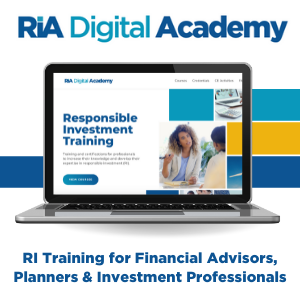The complex challenges facing institutional investors looking to engage more deeply with ESG often center around data. With rising investor interest, an array of ESG metrics, data sources, scoring methods and reporting standards have proliferated. Yet the need for consistency and relevance in these data sources is a recurring theme.
Investors typically have a need for at least some degree of customization to reflect individual preferences and priorities, standards to support the ESG investment process, and demonstrability of ESG representation in sustainable investments. Asset managers, insurance companies, and other institutional investors can expect demands for greater transparency around ESG investing in their portfolios from internal and external stakeholders. Asset owners face particularly complex demands, with rising awareness and demand from plan members, related sponsor organizations, and stakeholder groups to better measure, report, and act on ESG goals.
In some ways, the pursuit of better ESG data and technology outcomes is only one example of a larger data challenge facing institutional investors. The pursuit of innovative and sophisticated investment and organizational strategies continues as some are turning to advanced technology and data tools to streamline operations, access new market opportunities, and gain competitive advantage. Target outcomes include greater agility, enhanced resiliency, and a desire to better future-proof technology operations against the emerging needs of tomorrow. Addressing data challenges and ESG challenges may go hand in hand for many.
Considerations for ESG Data
To be usable or viable, unstructured ESG data must be incorporated into analytical calculations, internal, and external reporting. Particularly for organizations seeking to incorporate ESG into an array of investment and business processes, ESG data cannot be evaluated in isolation and will need to be connected to other content in the investment process. To add to the struggles of managing data, third party ESG data providers use varying methodologies, and as a result lead to a variance in scores.
There are challenges in the actual data: Why are different scorecards or taxonomies used when looking at portfolio companies? Clients must consider data because ultimately it will be used to conduct due diligence to decide if the data is a fit in terms of their sustainability objectives. They will also use data to balance their financial and non-financial tolerances – they are going to look at if there is an opportunity cost to the priorities they want to have in sustainability portfolios. Ultimately, each investor, manager and service provider has to make an assessment to understand their place in the data handling chain. What are the ultimate stakeholder obligations: for reporting, organizational engagement, investment activities and more.
Stakeholders will need to ask hard questions such as “do we primarily focus on a reporting requirement or are we trying to tie the data to an investment decision?” or, “how do we align ESG data to more than a sustainability investment or reporting team, and connect it across our entire investment process?” By embedding ESG into a long-term strategy, investors eliminate the need to try to arbitrage data, i.e., choose some data and start benchmarking on that basis. If the methodology of the data set is exposed, then organizations can disclose how they are making decisions based on the data their stakeholders are relying on.
In Canada and globally, we continue to see demand from institutional investors looking not only to bring in unstructured data, but also connect multiple sources of it and derive their own scores similar to creating their own benchmark to evaluate the impact of ESG on their investment decisions. As more firms consider how to incorporate ESG into their everyday processes, they are faced with the challenge of determining which sources of ESG information best align with their investment approach and workflows.
According to research from the Chartered Financial Analyst Institute and United Nations Principles for Responsible Investment, the lack of standards around ESG data verification and the demonstrability of the ESG factors shaping investment portfolios are among the key barriers to greater ESG integration into investment processes. The lack of standards can also lead to claims of “greenwashing” or “social washing,” which can impact trust and credibility and in turn expose asset owners to risk. Investors and their stakeholders have a clear and shared interest in creating foundations for trust that include shared definitions and shared measurements against which to assess, test, measure and report.
Solutions on the Horizon
The Government of Canada addressed the lack of standards in its 2022 Federal Budget which states that Canada’s Office of the Superintendent of Financial Institutions (OSFI) “will consult federally regulated financial institutions on climate disclosure guidelines in 2022 and will require financial institutions to publish climate disclosures—aligned with the TCFD framework—using a phased approach, starting in 2024.” According to the budget, OSFI will also expect financial institutions to collect and assess information on climate risks and emissions from their clients. Furthermore, the Government of Canada will move forward with requirements for disclosure of environmental, social, and governance (ESG) considerations, including climate-related risks, for federally regulated pension plans.
Fortunately, progress toward common standards continues across several fronts. For example, the Canadian Securities Administrators (CSA) in January 2022 issued CSA Staff Notice 81-334 – ESG-Related Investment Fund Disclosure to provide guidance to investment funds with respect to how those funds should be named and how investment approaches should be written in regulatory filings. Likewise, the International Sustainability Standards Board (ISSB) – which has its North American HQ in Montreal – recently launched a consultation on its general sustainability-related disclosure requirements and climate-related disclosure requirements. The ISSB states that it is seeking feedback by July 29, 2022, and aims to issue the new standards by the end of the year, subject to the feedback.
Technology will be an essential factor in achieving the greater transparency that stakeholders are demanding. New tools connecting asset managers and investment finance teams with detailed information on performance and management will be important tools for cutting-edge information and meeting compliance goals. For example, our enterprise application introduces the concept of ‘crowdsourcing metrics’ to address the sustainability challenges and allows investors to compare their priorities and in turn work to realize their strategies. As with any group, both overall and relative performance are important and the ability to compare and benchmark against peers is a key element of responding to Boards, Trustees, shareholders and other stakeholders regarding progress and opportunities.
In summary, the ESG investment landscape remains complex and fast moving, but Canadian asset owners and their stakeholders are moving just as rapidly to grow their sophistication, understanding, and capabilities in turn.
RIA Disclaimer
The views and opinions expressed in this article are solely those of the authors and do not necessarily reflect the view or position of the Responsible Investment Association (RIA). The RIA does not endorse, recommend, or guarantee any of the claims made by the authors. This article is intended as general information and not investment advice. We recommend consulting with a qualified advisor or investment professional prior to making any investment or investment-related decision.

